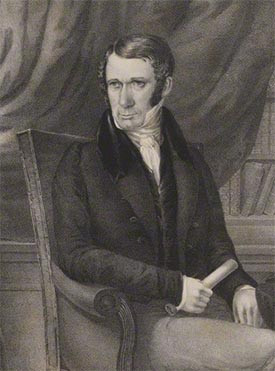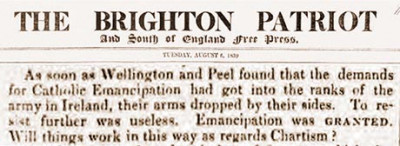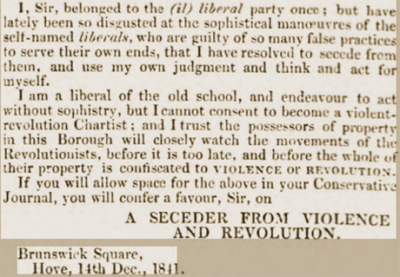Chartism in Brighton
By James Blagden
An explanation of Chartism from the National Archive…
In 1832, voting rights were given to the property-owning middle classes in Britain. However, many people wanted further political reform.
Chartism was a working class movement, which emerged in 1836 and was most active between 1838 and 1848. The aim of the Chartists was to gain political rights and influence for the working classes.
Chartism got its name from the formal petition, or People’s Charter, that listed the six main aims of the movement. These were:
-
A vote for all men (over 21)
-
The secret ballot
-
No property qualification to become an MP
-
Payment for MPs
-
Electoral districts of equal size
-
Annual elections for Parliament
The movement presented three petitions to Parliament - in 1839, 1842 and 1848 – but each of these was rejected.
Following the Electoral Reform Act of 1832, Brighton was enfranchised as a parliamentary borough, returning two MPs to Parliament. George Faithfull and Isaac Wigney were the first of these, but Faithfull's extreme radical views were unpopular.

The diarist Charles Greville described him as a "bad character". Faithful was defeated at the next general election in 1835. He was a nonconformist preacher and solicitor, advocating the abolition of slavery and a standing army, and opposed the Corn Laws. He also supported universal suffrage and annual parliaments. In 1835 he founded the Brighton Patriotnewspaper, (which I am currently researching).
I wonder what the people of Brighton thought about their town being enfranchised as a parliamentary borough? And also what they think of their new MPs?
Greville was staying at Lord de Ros’ house in Brighton at the time of the 1832 election, (we need to locate that).
Brighton Gazette, 5th September 1839
The Brewers' Arms in Church Street was investigated in case it was “unfit for the neighbourhood”. Since the previous licensing day a room had been added that held 500 people. The landlord was William Reeves and according to the Gazette his license was postponed until the opinion of his neighbours could be determined and enquiries made into activities when Bronterre O’Brien, an Irish Chartist leader, lectured there. He was told to be ready to answer further questions on the adjourned day, 10th September.
(We should follow up this incident. Although the pub itself was in Lewes, it was a popular spot and people would have been talking about it at the time. The Globe (still on 78 Middle Street) was also frequently attended and we should research that too.)
Brighton Gazette, 5th September 1839
“We [magistrates] have been anxiously observant of the mischief occasioned by the conduct of the Chartists in the northern districts and elsewhere in the kingdom; and we earnestly warn all publicans against allowing persons to make seditious speeches in their houses. And we are disposed to think, from what has passed, that persons who profess to be Chartist delegates, and who go from home to preach disobedience to the laws, and endeavour to promote an alteration in our laws by force, are not fit persons to be entrusted with licenses as publicans.”

Someone (an anonymous resident of Brunswick Square) wrote to the editor of Brighton Gazette 14/12/1841 decrying Chartism and the violent actions of its adherents. This person hopes that Chartist would end before “the whole of their property is confiscated to violence and revolution”.

(We should try to discover the identity of the letter writer)
Isaac Wigney is also mentioned, but only in passing.
By 1857 there were still rowdy chartists in Brighton. On 2nd April 1857 a town meeting was reported by the Brighton Gazette: "M. Ricardo claimed that chartism had died down, to which the crowd responded with 'uproar' and eventually 'pelting each other with gravel and dirt'.”
The story in Brighton can be contextualized by national events, such as the Bull Ring Riots in Birmingham 1839 and the numerous Chartist petitions to parliament from 1839-48 (the petition in 1841 had 3,000,000 signatures).
Sources:
An article on George Faithfull
Information on the Bull Ring Riots
(The location of the Brewers' Arms has been corrected following information provided by Nick Heath.)